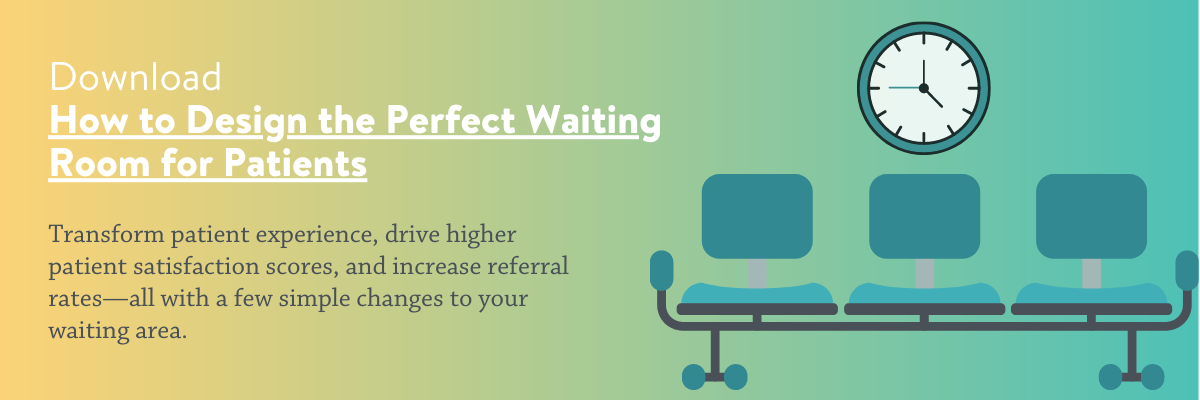Doctors may like to think that what happens in the exam room is the most important part of a patient’s visit. In fact, your waiting room may have more to do with patients’ overall satisfaction than with their medical care. After all, the waiting room is patients’ first impression of your practice, and they spend an average of 20 minutes there before their appointment. With the rise of doctor rating sites and a more competitive health care environment, it’s in your best interest to offer your patients the best experience possible the minute they walk through your door. Here are three ways to make your waiting room more appealing.
1. Consider the design
Yes, you’re a doctor, not an interior designer. But there are certain elements you can easily and affordably incorporate into your waiting room, including comfortable seating. One progressive design company has suggested that modular seating — with movable components and cushions that can be customized to different offices or individuals — would improve doctors’ waiting rooms. Bear in mind that what’s comfortable for some patients may not be for others. Older patients may have difficulty getting up off a couch, for example. Chairs with two sturdy arms may provide more support.
Plants can improve the look of your waiting room and even improve the air quality. A NASA study found that aloe vera, spider plants, and Gerbera daisies help filter volatile organic compounds (VOCs) out of the air.
You might also consider some kind of room dividers or separate areas of your waiting room where patients can have some privacy to make a phone call, for example. Check out Pinterest for some creative waiting room design ideas.
2. Make wait time enjoyable
Studies have shown that the actual wait time is not as important to people as the perception of their wait. If their time was spent doing something pleasant, patients are less likely to notice — let alone complain about — the wait. Brewing a cup of coffee or tea takes several minutes and can increase patients’ overall perception of value.
Giving patients the chance to shop while they wait is another idea that helps some doctors keep patients busy and boost revenue at the same time. Many optometrists are already doing this, as well as dentists, orthopedists, and dermatologists. Consider setting up shop in a corner of your waiting room to sell something, even if it’s just books.
3. Let patients be productive
While patients are waiting to see you, are they flipping through outdated magazines or using that time to do something productive, like educating themselves about their health? New research shows that one in five patients uses his or her smartphone to search for health-related information in the doctor’s waiting room before an appointment.
You can help them by providing free Wi-Fi and directing them towards high-quality patient education materials of your own, either on your website or social media pages, or on a TV or tablet in your waiting room. Online platforms make this possible and scalable. Patients can watch your patient education videos in the waiting room, then go home and share them with their family members on their phone or computer after the appointment.
With a little creativity and a small investment, you can make your waiting room a pleasant and productive space for your patients. And if patients’ first impression of your practice is a good one, they’re sure to spread the word. Find out more about how you can use online resources to make your waiting room, and your business, patient friendly. Subscribe to our newsletter today.


